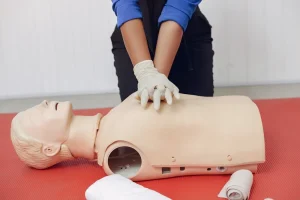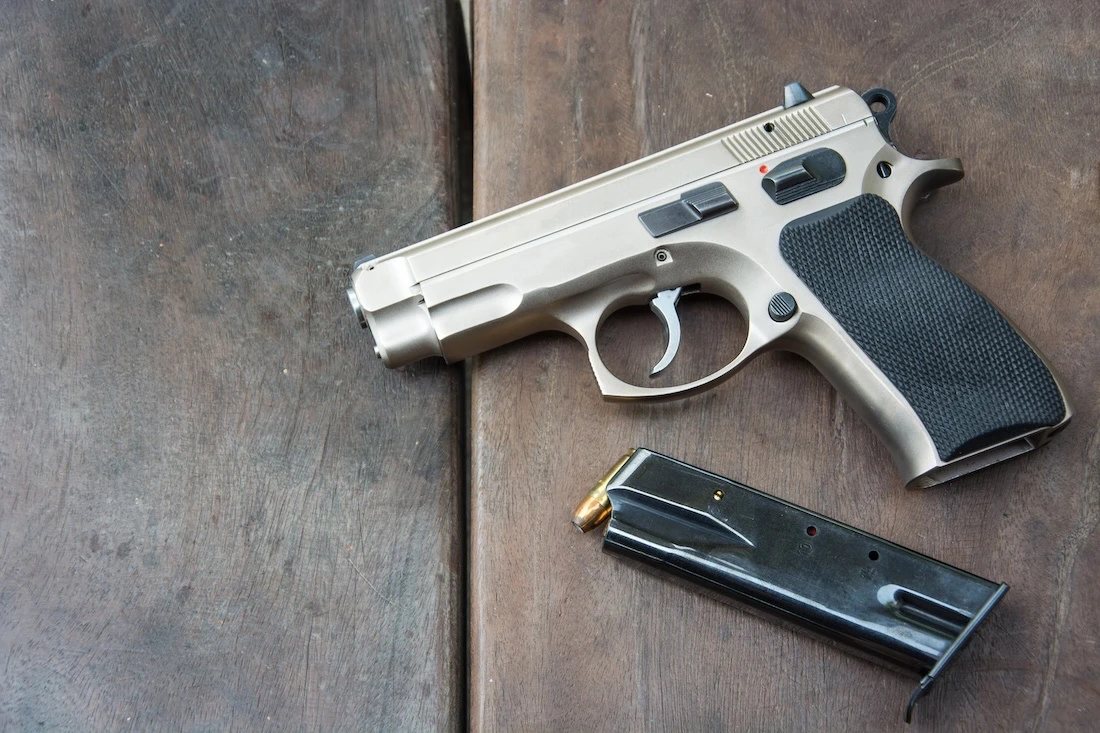


Have you ever found yourself in an emergency situation? Have you ever witnessed a knife or gunshot injury firsthand and didn’t know what to do?
Gunshot and stab wounds are one of the most devastating injuries a person can endure. The damage caused by a gunshot or knife wound requires years of healing, and in some cases, it is even irreparable.
Factors such as the type of bullet, its trajectory, speed, and its location affect the severity of the wound. A bullet can often rip through your organs, break bones and also puncture lungs, causing severe blood loss. Similarly, stabbing entails the penetration of a sharp object through your body, damaging your internal organs, often causing uncontrollable blood loss. Both gunshot and knife wounds have such severe repercussions; hence, it’s vital to contain the blood loss and get a grip on the injury till the paramedics arrive.
We understand that being in a situation like this can be difficult. However, the first step is to remain calm and composed and call the emergency helpline to send paramedics your way. Until the paramedics or any professional help arrives, the situation is in your hand. You can start by treating knife and gunshot wounds by following a few necessary steps.
If you find yourself in a situation where you have to treat a gunshot or knife wound before the paramedics arrive, take a deep breath and take charge. Make sure that you act fast and provide the patient with the care and support they need.
Here are a few steps that you should follow to ensure that the patient remains stable and survives this horrible situation.
A victim suffering from a gunshot or knife wound can bleed to death. Whether it’s an entrance or exit wound, a gunshot penetrates through the body, damaging one or multiple organs, like a knife wound. In either case, the first step for you to take is to stop the bleeding.
The breathing of the victim should be monitored throughout until the paramedics arrive on the scene. When a person is bleeding out, their lungs tend to collapse, which is why it’s necessary to keep monitoring their breathing pattern.
Keep a check on the victim’s blood circulation before and after you apply pressure to the wound. You can check their pulse by placing your index and middle finger on their throat or wrist.
CPR is a life-saving technique that everyone should know as an emergency situation can arise at any time.
Gunshot and knife wounds can often land the victim in a condition of shock. This typically occurs due to the traumatizing nature of the situation and, obviously, the severe blood loss. In a traumatic case like this, you should always be prepared to treat the patient for shock.
Even though this might not help a victim physically, it can help pull them out of shock. It would help if you reassured the victim that they are alright and that you are helping them. Talking to the victim also keeps them conscious, which is vital in this situation.
If the patient remains conscious, ask them about any medications they’re taking, any medical conditions they have, such as diabetes or hypertension, and any drug allergies they might have. This will not only help distract the patient from their current situation but also give you essential information that you can deliver to the paramedics in case the victim loses consciousness at their arrival.
If you ever find yourself involved in an emergency situation like this, there are a few points you need to remember because, well, it’s a life-and-death situation.
If the patient is conscious, never give them anything to eat or drink, including water. Since you aren’t aware of the severity of the wound, you won’t know which internal organs have suffered damage, and giving them something to eat or drink could make the situation much worse.
You will first have to determine where the gunshot or knife wound is. Never elevate the victim’s legs unless the injury is on the arm. A gunshot wound to the abdomen or chest tends to bleed out more quickly if the legs are kept in an elevated position. It can become challenging for the patient to breathe, causing more issues. So, you’ll have to ensure the patient is kept in a straight position until the paramedics arrive.
If the patient remains conscious even after being stabbed or shot, accommodate them in the best way possible. You can keep them upright (sitting) or let them lie down straight, depending on what’s more comfortable for them. However, if the patient is unconscious, ensure they are placed in recovery.
Victims who suffer from knife or gunshot wounds usually lose their lives due to extreme blood loss. The key to controlling the incessant flow of blood is to apply pressure. Make sure you use pressure until the wound appears completely contained or till the paramedics arrive at the scene. If you stop, the bleeding could start again.
Another critical thing to remember is that all entrance and exit gunshot wounds are the same. A myth states that one wound type is far more detrimental than another. However, there’s no reliable way to tell that, and neither does it matter since all puncture wounds are typically treated similarly.
Treating knife and gunshot wounds is not an easy task. Dealing with such a severe situation can cause panic. However, by following the few steps above, you can stay in control of the problem and possibly save someone’s life!
If you’re interested in more specific training in how to treat knife and gunshot wounds, Stop The Bleeding has a program specifically designed to stop bleeding in a severely injured person. ABC Health and Safety Training is not in any way associated with Stop The Bleeding, but we highly recommend their program.

Don’t miss out on lifesaving opportunities! Subscribe to our email list for updates on classes, exclusive events, and the latest health and safety news.
